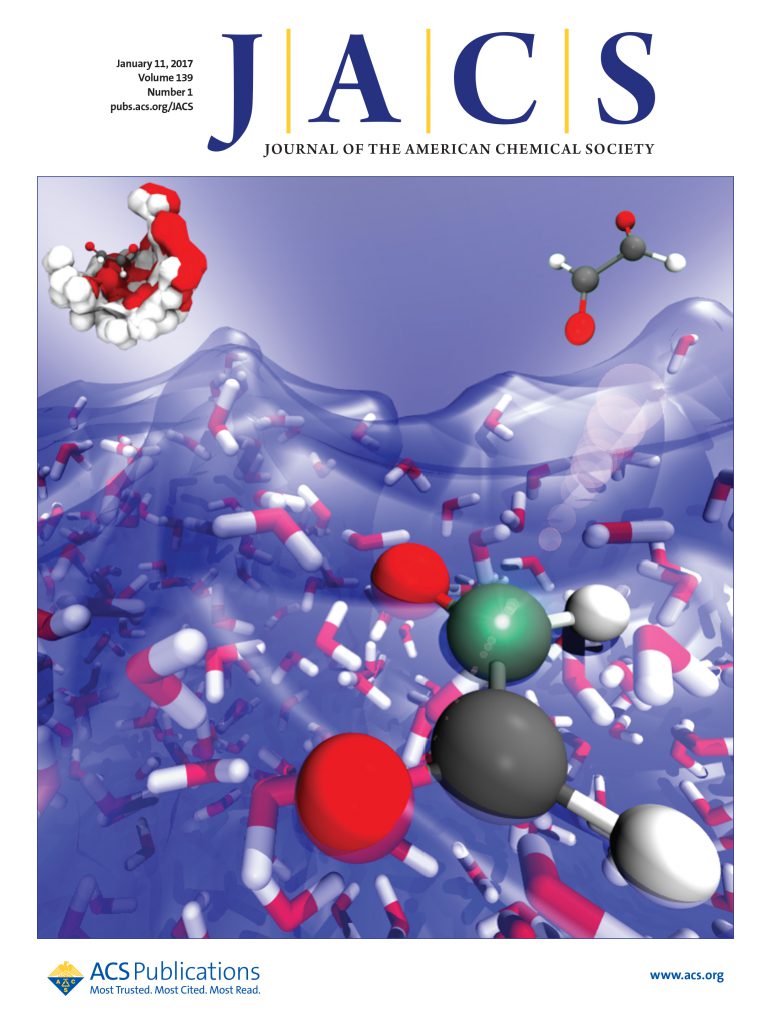Carbon-Atom Scavengers Enable Divergent, Selective Carbon Deletion of Azaarenes
IF 14.4
1区 化学
Q1 CHEMISTRY, MULTIDISCIPLINARY
引用次数: 0
Abstract
Divergent synthesis is a powerful strategy that provides simultaneous access to multiple derivatives of a given substrate. However, the emerging developments in skeletal editing have largely delivered methods that lack this potential for diversification. Herein, we report the serendipitous discovery of reagent-controlled selective deletion of C3 or C2 carbon atoms of quinolines, affording indoles. An initial observation that an impurity in commercial samples of DBU promoted cyclization of a benzoxazepine-derived imidate led to the identification of indoline and aminoethanol as C3- and C2-selective carbon-atom scavengers, respectively. These two methods successfully convert a broad scope of quinolines and related azaarenes to the corresponding indoles and azaindoles, enabling divergent carbon deletion. In-depth mechanistic studies support the HFIP-promoted ring opening of 3,1-benzoxazepines to amidine intermediates as a rate-determining step, while providing insights into the selectivity afforded by indoline. These methods and their associated mechanisms offer a blueprint for the rational design of reagent-controlled, divergent skeletal edits.

碳原子清除剂使发散的,选择性的氮杂芳烃碳删除
发散合成是一种强大的策略,可以同时获得给定底物的多个衍生物。然而,骨骼编辑的新兴发展在很大程度上提供了缺乏这种多样化潜力的方法。在此,我们报告了偶然发现的试剂控制的选择性删除C3或C2碳原子的喹啉,提供吲哚。初步观察发现,商业样品中的一种杂质促进了苯并恶西平衍生的酰咪酯的环化,从而鉴定出吲哚和氨基乙醇分别是C3和c2选择性碳原子清除剂。这两种方法成功地将广泛的喹啉和相关的偶氮杂环芳烃转化为相应的吲哚和偶氮杂环,从而实现了分散的碳缺失。深入的机制研究支持hfip促进3,1-苯并恶氮卓类药物对脒中间体开环作为一个速率决定步骤,同时提供了对吲哚所提供的选择性的见解。这些方法及其相关机制为试剂控制的、发散的骨架编辑的合理设计提供了蓝图。
本文章由计算机程序翻译,如有差异,请以英文原文为准。
求助全文
约1分钟内获得全文
求助全文
来源期刊
CiteScore
24.40
自引率
6.00%
发文量
2398
审稿时长
1.6 months
期刊介绍:
The flagship journal of the American Chemical Society, known as the Journal of the American Chemical Society (JACS), has been a prestigious publication since its establishment in 1879. It holds a preeminent position in the field of chemistry and related interdisciplinary sciences. JACS is committed to disseminating cutting-edge research papers, covering a wide range of topics, and encompasses approximately 19,000 pages of Articles, Communications, and Perspectives annually. With a weekly publication frequency, JACS plays a vital role in advancing the field of chemistry by providing essential research.

 求助内容:
求助内容: 应助结果提醒方式:
应助结果提醒方式:


